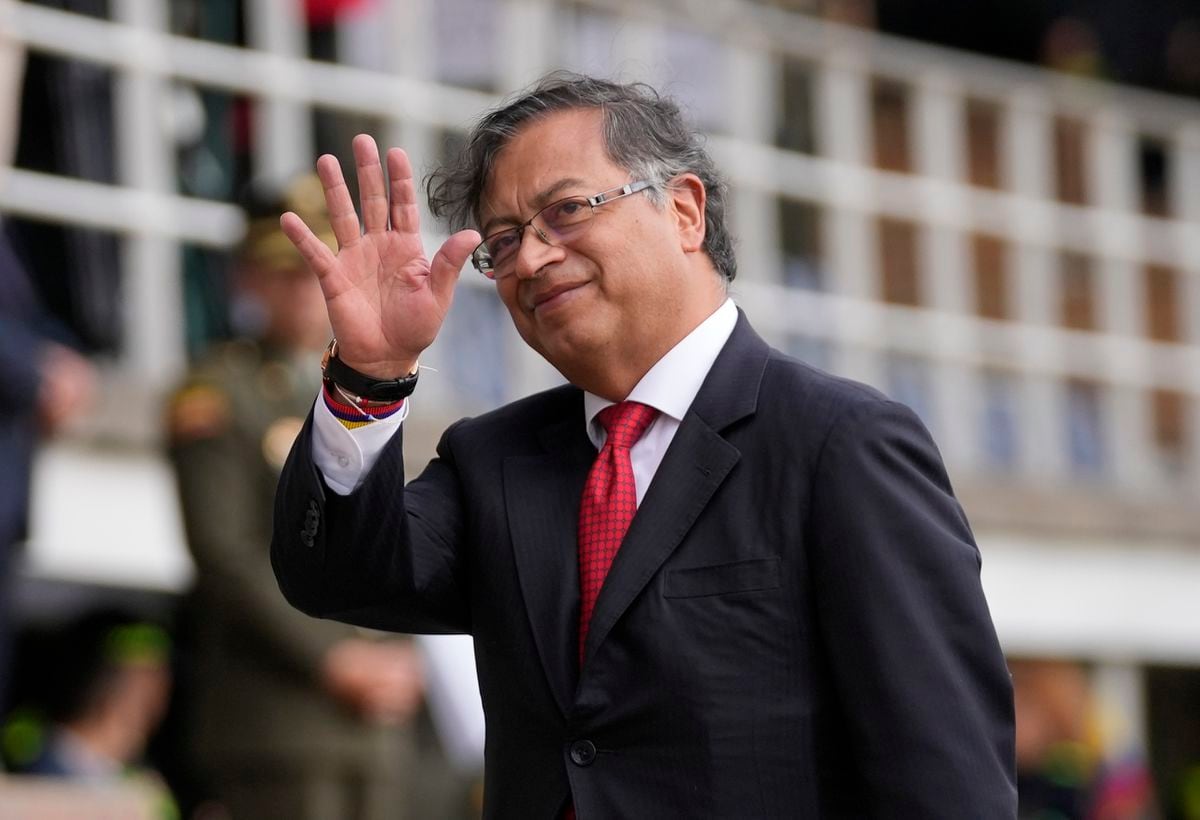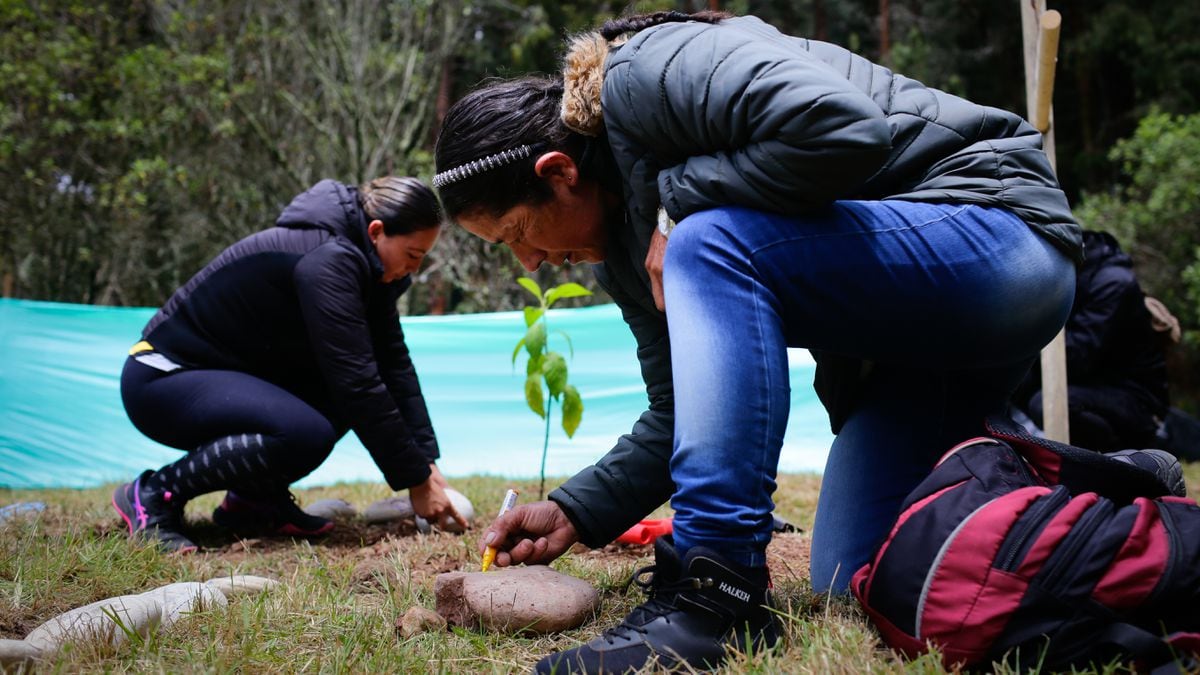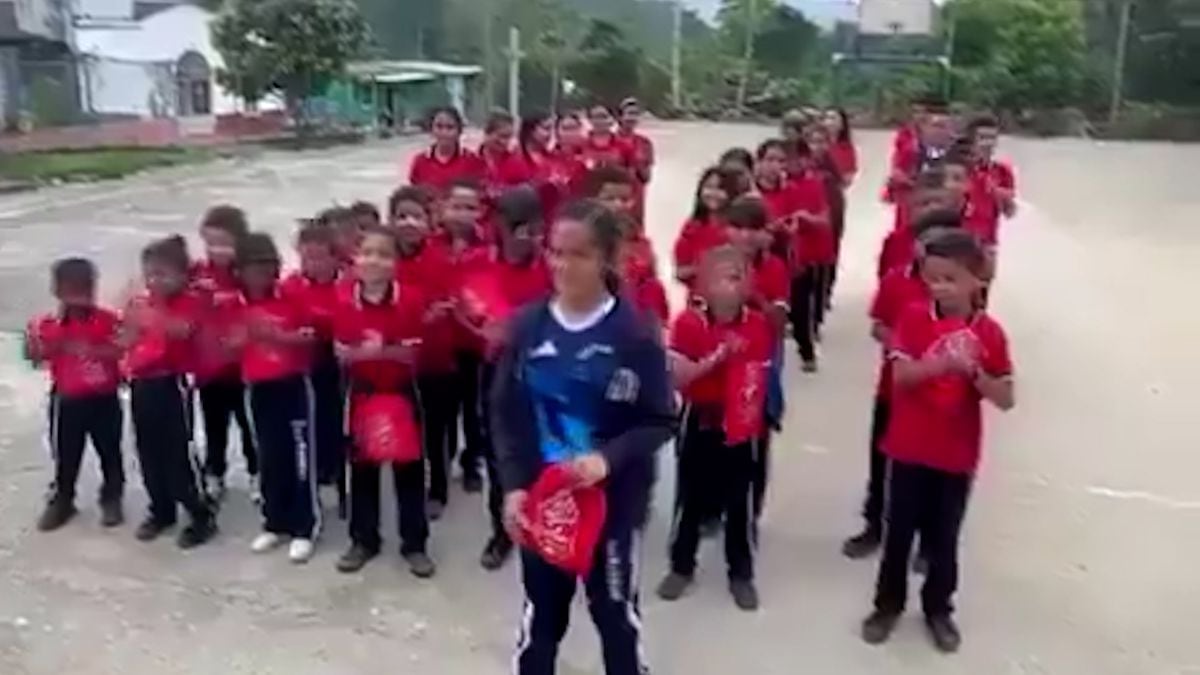Demobilized from the FARC protest this Thursday Luis Eduardo Noriega A. / EFE
In less than a week, another mobilization in chivas and on foot is heading to Bogotá to draw the attention of the Government of Iván Duque on the violence and the implementation of the peace agreement.
This time around 2,000 ex-combatants from the former FARC are signatories of the agreement, who surrendered their weapons in 2016, and who march for the murder of 236 of their comrades.
“We are going to demand that the Government comply with the agreements.
For us, they were torn to shreds, as promised in the campaign.
That is evidenced in the lack of respect for life.
They are taking us to the cemetery ahead of time, ”says Harrrison Arturo Garcés, one of the signatories of the agreement from one of the stops of the march in Antioquia, to EL PAÍS.
He left from one of the Territorial Training Areas, where some of the ex-combatants live.
He left from Dabeiba, in the north of the department, along with 45 people, but they have been adding pilgrims along the way.
The so-called Pilgrimage for Life, Peace, and the Implementation of the Final Agreement has brought together ex-combatants from the south, northeast and southwest of the country, who make a stopover in different cities and hope to arrive in Bogotá on November 1 and start a march to the Plaza de Bolívar, in front of the government house.
And although they have not been received with the same jubilation that accompanied the indigenous minga, one of the pilgrims points out that they were not subjected to whistles or attacks in areas where they previously operated as an armed group.
Instead they have experienced acts of reconciliation such as the one that occurred in Doradal (Antioquia) where the former head of the paramilitaries, Ramón Isaza, their former enemy, came out to meet them to encourage them in the mobilization.
For ex-FARC combatants, in addition to insisting that they not be assassinated, the march is the opportunity to demonstrate that their intention to reintegrate into society is firm.
For this reason, in places like Meta, in the center of the country, they made a public act of forgiveness to the victims of that region who were beaten by their past guerrilla actions.
The mobilization occurs at a critical moment regarding the truth that is demanded of the top leaders of that guerrilla, now turned into a political party.
Several of them have admitted their participation in six crimes, including the assassination of the conservative leader, Álvaro Gómez Hurtado, as well as the recruitment of minors into the ranks, among other crimes.
The atmosphere of tension due to the multiple massacres and murders of social leaders and former combatants has led to calls for attention from the UN Verification Mission in Colombia.
In October, before the Security Council, the head of the Mission, Carlos Ruiz Massieu, indicated that since the signing of the Agreement they have verified a total of 297 attacks against former members of the FARC, including 224 murders (as of October 14), 20 disappearances and 53 attempted homicides.
“It is essential to work with communities and design effective security measures and make progress in improving the protection of ex-combatants, who continue to be killed.
Continue fighting against impunity for these crimes, including bringing the masterminds to justice, ”said the head of the Verification Mission.
According to figures from the Office of the Prosecutor, there are "investigative advances in 158 of the 316 acts of victimization" against ex-combatants and their families.
The institution assures that the attacks come from dissident groups of the FARC;
of the ELN guerrilla and of drug paramilitary groups such as the Clan del Golfo, among others.
And the Government, through the Stabilization Council, admits that "redoubled efforts" must be made, especially for ex-combatants who make their reincorporation individually or who are not grouped in the Territorial Training Areas (ETCR).
Of the total of 13,000 men and women who laid down their weapons, at least 9,000 live outside the ETCR.
“We did not lay down our arms to be killed, but to allow us to rejoin social and economic life, to regain the right to be with our families.
But we are not seeing it anywhere ”, says Harrison Garcés, who hopes that after arriving in the center of Bogotá they will be received by members of the Government.




/cloudfront-eu-central-1.images.arcpublishing.com/prisa/62WTZ2YGTKOGTJ6OXJW67JCCME.jpg)




/cloudfront-eu-central-1.images.arcpublishing.com/prisa/NCQFUQJJ4ZHRJLKNWPLQ2MFQR4.jpeg)